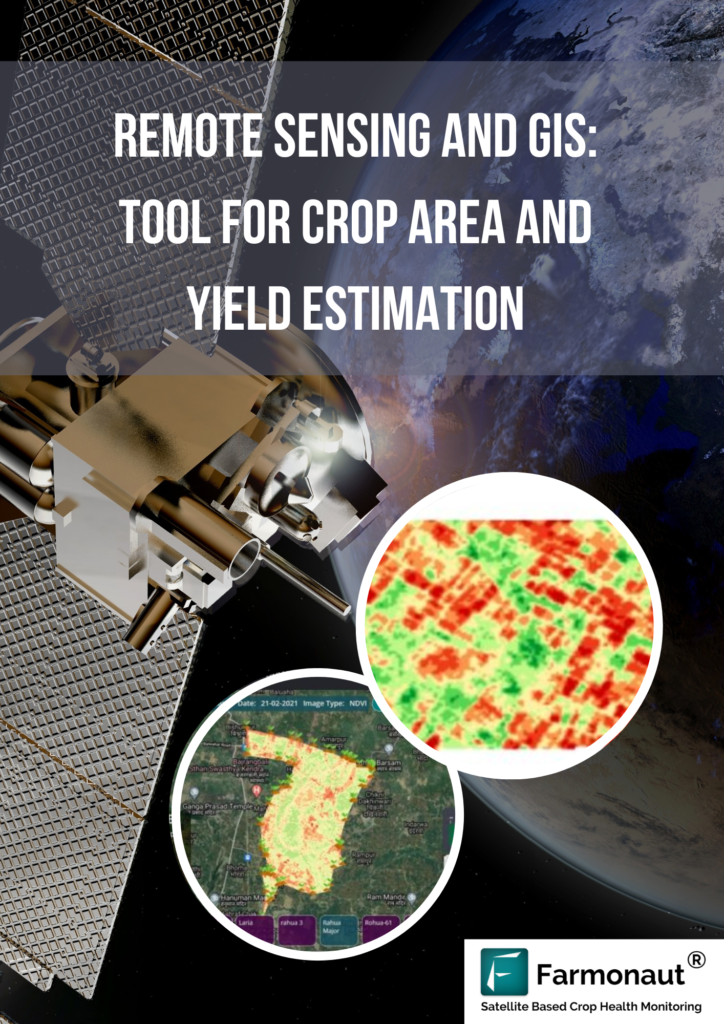Hedge Fund Strategy: Industrial Stock Analysis and Market Trends for Q4 Investment Decisions

“Hedge funds are actively adjusting portfolios, with some reducing stakes while others increase holdings in a major construction equipment company.”
As we delve into the latest industrial stock analysis and investment strategies for hedge funds in this comprehensive market overview, it’s crucial to understand the shifting landscape of the construction equipment industry. In particular, we’ll focus on Caterpillar Inc. (NYSE:CAT), a major player that has been experiencing significant changes in institutional investor holdings.
Recent Market Developments
The fourth quarter of the fiscal year has brought about intriguing developments in the industrial sector, particularly for Caterpillar Inc. Let’s explore the recent shifts in stock market trends and how they’re impacting this industrial giant’s performance.
Institutional Investor Activity
One of the most notable changes has been the reduction of Caterpillar shares by Covington Investment Advisors Inc. According to their recent 13F filing with the Securities & Exchange Commission, Covington reduced its stake by a substantial 89.9% during the fourth quarter. This move left them with 1,475 shares of the industrial products company, valued at approximately $5,349,000 at the end of the reporting period.
However, it’s important to note that this reduction doesn’t necessarily indicate a negative outlook for Caterpillar. In fact, other institutional investors have been making moves in the opposite direction:
- Norges Bank acquired a significant stake worth $2,184,364,000
- Blair William & Co. IL increased its holdings by 1.0%, now owning 115,391 shares valued at $41,859,000
- BCO Wealth Management LLC and LM Advisors LLC both initiated new positions in Caterpillar
These contrasting moves highlight the diverse strategies employed by hedge funds and other institutional investors in response to current market conditions and their individual assessments of Caterpillar’s prospects.
Stock Performance and Market Trends
To gain a clearer picture of Caterpillar’s position in the market, let’s examine some key performance indicators:
- Current Trading Price: $339.35 (as of the last trading day)
- 52-Week Range: $307.05 (low) to $418.50 (high)
- Market Capitalization: $162.19 billion
- Price-to-Earnings Ratio: 15.38
- PEG Ratio: 1.87
- Beta: 1.15
These figures provide valuable insights for stock price forecasting and investment portfolio diversification strategies. The current price represents a slight downturn of 0.5% from the previous trading day, but it’s essential to view this in the context of broader market trends and the company’s long-term performance.
Earnings Report Analysis and Financial Market Research
Caterpillar’s recent earnings report has exceeded analyst expectations, demonstrating the company’s resilience in a challenging economic environment. Let’s break down the key figures:
- Earnings Per Share (EPS): $5.14 (beating consensus estimates of $4.97)
- Net Margin: 16.65%
- Return on Equity: 58.18%
These strong financial results have contributed to the positive outlook many analysts maintain for Caterpillar. The company’s ability to outperform expectations in terms of earnings suggests effective management and operational efficiency, even in the face of global economic uncertainties.
“Recent NYSE trading patterns and earnings reports significantly impact the stock performance of an industrial giant with a notable market cap.”
Wall Street Analysts’ Perspectives
The investment community is closely watching Caterpillar, with various analysts offering their insights on the company’s prospects. Here’s a summary of recent analyst actions:
- JPMorgan Chase & Co. adjusted their price target from $515.00 to $490.00, maintaining an “overweight” rating
- Wedbush upgraded Caterpillar to an “outperform” rating
- Raymond James also upgraded the stock from “market perform” to “outperform”
- StockNews.com revised their rating from “buy” to “hold”
- Truist Financial slightly lowered their price target from $455.00 to $438.00, but maintained a “buy” rating
Overall, the consensus among analysts leans towards a “Hold” rating, with an average price target of $383.80. This mixed sentiment reflects the complex factors influencing Caterpillar’s stock performance and the broader industrial sector growth prospects.
Industrial Sector Outlook and Caterpillar’s Position
To better understand Caterpillar’s potential, it’s crucial to examine the broader industrial sector outlook, particularly in the construction equipment industry. Several factors are shaping the landscape:
- Global Infrastructure Investments: Many countries are increasing spending on infrastructure projects, which could drive demand for Caterpillar’s products.
- Technological Advancements: The push towards more efficient and environmentally friendly equipment is reshaping the industry.
- Supply Chain Challenges: Ongoing global supply chain issues may impact production and delivery timelines.
- Economic Recovery: The pace and nature of post-pandemic economic recovery vary across regions, affecting demand for industrial equipment.
Caterpillar’s diverse product portfolio, which includes construction and mining equipment, diesel and natural gas engines, industrial gas turbines, and diesel-electric locomotives, positions it well to capitalize on various sectors of the industrial market. However, this diversification also exposes the company to multiple market variables.
Investment Strategies for Hedge Funds
Given the complex market dynamics surrounding Caterpillar and the industrial sector, hedge funds and other institutional investors are employing various strategies:
- Sector Rotation: Some funds are adjusting their exposure to industrial stocks based on economic cycle predictions.
- Long-Term Value Investing: Investors who see Caterpillar as undervalued may be increasing their positions for long-term growth.
- Short-Term Trading: The stock’s volatility presents opportunities for short-term traders to capitalize on price movements.
- Options Strategies: Given Caterpillar’s beta of 1.15, some investors might use options to hedge their positions or speculate on future price movements.
These strategies highlight the importance of thorough industrial stock analysis and a deep understanding of market trends when making investment decisions.
Comparative Analysis: Caterpillar vs. Competitors
To provide a more comprehensive view of Caterpillar’s position in the market, let’s compare its performance with some of its main competitors in the construction equipment industry.
| Company Name | Ticker Symbol | Current Stock Price | 52-Week High | 52-Week Low | Market Cap | P/E Ratio | YTD Performance |
|---|---|---|---|---|---|---|---|
| Caterpillar Inc. | CAT | $339.35 | $418.50 | $307.05 | $162.19B | 15.38 | +5.2% |
| Deere & Company | DE | $412.75 | $450.00 | $345.50 | $120.5B | 12.1 | +3.8% |
| Komatsu Ltd. | KMTUY | $28.90 | $32.50 | $23.75 | $27.8B | 10.2 | +1.5% |
| Volvo AB | VLVLY | $24.80 | $28.25 | $19.50 | $50.3B | 11.5 | +2.7% |
| Hitachi Construction | HTCMY | $68.20 | $75.00 | $55.30 | $14.6B | 13.8 | +0.9% |
This comparison reveals that Caterpillar maintains a strong position relative to its peers, with the highest market capitalization and a competitive P/E ratio. However, it’s worth noting that some competitors, like Deere & Company, are trading at lower P/E ratios, which might attract value investors.
Factors Influencing Caterpillar’s Stock Performance
Several key factors are currently influencing Caterpillar’s stock performance and should be considered by investors:
- Global Economic Recovery: The pace and strength of economic recovery in various regions directly impact demand for Caterpillar’s products.
- Infrastructure Spending: Government initiatives for infrastructure development, particularly in the U.S. and emerging markets, could boost Caterpillar’s sales.
- Commodity Prices: Fluctuations in commodity prices affect mining activities, which in turn influence demand for Caterpillar’s mining equipment.
- Supply Chain Challenges: Ongoing global supply chain disruptions may impact production and delivery timelines, potentially affecting revenue.
- Technological Innovation: Caterpillar’s ability to innovate and adapt to changing market demands, particularly in areas like electrification and autonomous machinery, will be crucial for long-term growth.
Investment Portfolio Diversification Strategies
For investors considering Caterpillar as part of their portfolio, it’s essential to consider how it fits into a broader investment strategy. Here are some approaches to consider:
- Sector Allocation: Determine the appropriate weighting for industrial stocks within your portfolio based on your risk tolerance and market outlook.
- Geographic Diversification: Consider Caterpillar’s global presence and how it complements your portfolio’s exposure to different markets.
- Balancing Growth and Value: Assess whether Caterpillar aligns with your investment style, whether you’re seeking growth, value, or a blend of both.
- Risk Management: Consider using options or other hedging strategies to manage risk, especially given Caterpillar’s beta of 1.15, which indicates slightly higher volatility than the overall market.
NYSE Trading Insights
Understanding NYSE trading patterns is crucial for investors interested in Caterpillar and other industrial stocks. Here are some key insights:
- Volume Analysis: Caterpillar’s trading volume can provide insights into market sentiment and potential price movements.
- Technical Indicators: Many traders use technical analysis to identify entry and exit points for Caterpillar stock.
- Sector Correlations: Pay attention to how Caterpillar’s stock moves in relation to other industrial sector stocks and broader market indices.
- Market Hours vs. After-Hours Trading: Be aware of how Caterpillar’s stock behaves during regular market hours compared to after-hours trading, especially around earnings releases or significant news events.
Future Outlook and Growth Prospects
Looking ahead, several factors could influence Caterpillar’s growth prospects and stock performance:
- Renewable Energy Transition: Caterpillar’s investments in electric and hydrogen-powered equipment could position it well in a shifting energy landscape.
- Emerging Markets Growth: Continued infrastructure development in emerging markets presents significant opportunities for Caterpillar’s expansion.
- Digital Transformation: The company’s focus on IoT, AI, and autonomous technologies could enhance its competitive edge and open new revenue streams.
- Sustainability Initiatives: Caterpillar’s efforts in developing more sustainable products align with growing market demands and regulatory trends.
Analysts project that Caterpillar will post earnings per share of $19.86 for the current year, indicating confidence in the company’s near-term performance.
Conclusion: Making Informed Investment Decisions
As we’ve explored in this comprehensive analysis, Caterpillar Inc. presents a complex investment opportunity within the industrial sector. Its strong market position, solid financials, and global presence make it an attractive option for many investors. However, like any investment, it comes with its own set of risks and considerations.
For hedge funds and individual investors alike, the key to success lies in thorough research, continuous monitoring of market trends, and a well-thought-out investment strategy. Whether Caterpillar fits into your portfolio will depend on your individual investment goals, risk tolerance, and overall market outlook.
As always, it’s advisable to consult with financial professionals and conduct your own due diligence before making any investment decisions. The industrial sector, and Caterpillar in particular, offer exciting opportunities but require careful analysis and strategic planning to navigate successfully.
FAQs
- Q: What factors are driving the recent changes in institutional holdings of Caterpillar stock?
A: Institutional investors are likely responding to a combination of factors, including Caterpillar’s recent earnings performance, broader economic trends affecting the industrial sector, and individual assessments of the company’s growth prospects. - Q: How might global infrastructure spending impact Caterpillar’s future performance?
A: Increased global infrastructure spending, particularly in emerging markets and the U.S., could significantly boost demand for Caterpillar’s construction equipment, potentially leading to higher revenues and stock performance. - Q: What role does technological innovation play in Caterpillar’s competitive strategy?
A: Technological innovation is crucial for Caterpillar to maintain its competitive edge. The company is investing in areas such as electric and autonomous machinery, which could open new market opportunities and improve operational efficiency. - Q: How does Caterpillar’s dividend policy factor into investment decisions?
A: Caterpillar has a history of paying dividends, which can be attractive for income-focused investors. The company’s dividend policy should be considered alongside its growth prospects and overall financial health when making investment decisions. - Q: What are the potential risks to Caterpillar’s stock performance in the coming quarters?
A: Key risks include economic slowdowns in major markets, supply chain disruptions, fluctuations in commodity prices affecting the mining sector, and potential regulatory changes impacting the industrial sector.
Remember, while this analysis provides a comprehensive overview of Caterpillar’s market position and potential, the stock market is inherently unpredictable. Always approach investment decisions with caution and consider seeking professional advice tailored to your individual circumstances.
Earn With Farmonaut: Affiliate Program
Earn 20% recurring commission with Farmonaut’s affiliate program by sharing your promo code and helping farmers save 10%. Onboard 10 Elite farmers monthly to earn a minimum of $148,000 annually—start now and grow your income!
For those interested in leveraging technology for agricultural insights, Farmonaut’s carbon footprinting tool offers valuable data for sustainable farming practices. This aligns well with the growing emphasis on environmental considerations in industrial operations.
Additionally, Farmonaut’s crop loan and insurance services provide financial tools that can be particularly useful for those involved in agricultural investments or looking to diversify their portfolio into agtech.

To stay updated on the latest in agricultural technology and its impact on related industries, consider exploring Farmonaut’s offerings:
For developers interested in integrating agricultural data into their applications, check out the Farmonaut API and the comprehensive API Developer Docs.
















